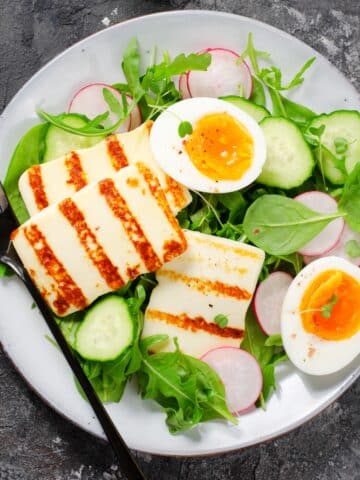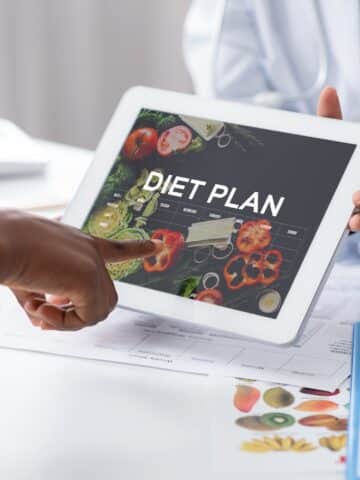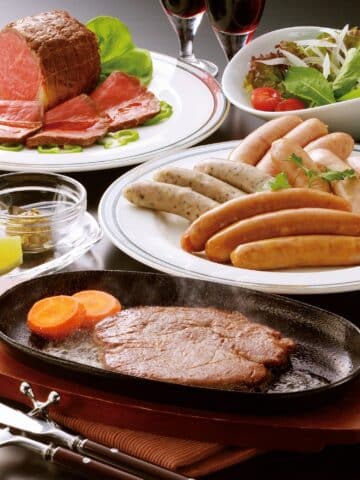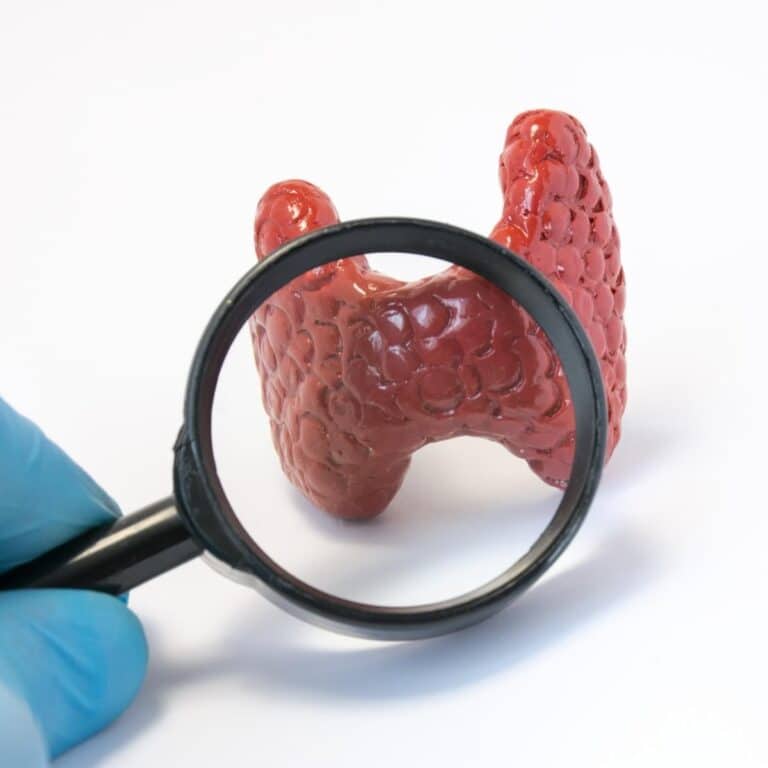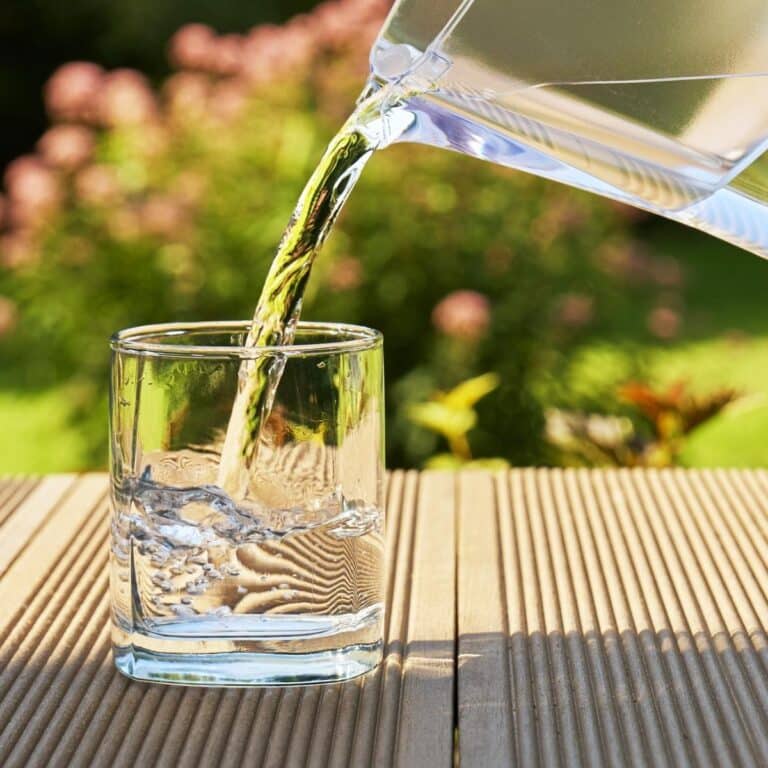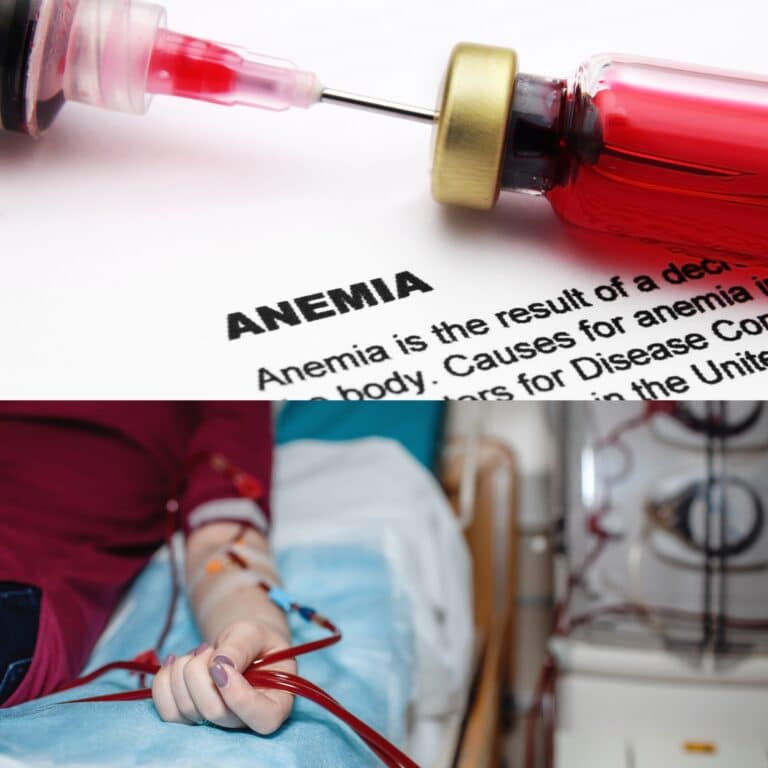Dining Out With Kidney Disease
Navigating the world of dining out while managing chronic kidney disease can seem daunting. But, don't fret! With a little planning and knowledge, you can enjoy your favorite restaurants while keeping your health in check.
This article will guide you through choosing kidney-friendly options at eateries, understanding portion control, and tackling tricky sodium content. You'll learn how to handle high-potassium foods and articulate your dietary needs without any awkwardness.
We've got tips for making smart choices even at fast food joints! Plus, we'll delve into alcohol's impact on kidney health and offer advice for social dining situations (fast food items to avoid with ckd).

Knowledge is power - with these tools, you'll be well-equipped to maintain a healthy lifestyle (early stage kidney disease) while enjoying life's delicious pleasures.
The key is to learn to live within the limitations of a kidney disease friendly diet without giving up activities and events that bring you joy. These tips will help you get more joy from eating out kidney disease or not. So go ahead – savor this read and prepare to eat out without compromising on taste or your wellbeing!
Jump to:
- Key Takeaways
- Understanding the Challenges of Dining Out with Kidney Disease
- Choosing Kidney-Friendly Options at Restaurants
- The Importance of Portion Control When Eating Out
- Why Kidney Patients Should Limit Sodium
- How To Reduce Sodium Intake
- Navigating Sodium Content in Restaurant Foods
- Why Renal Patients Should Avoid Excessive Potassium Intake
- Dealing with High Potassium Foods in Restaurants
- Controlling Protein Intake When Dining Out
- The Role of Hydration When Dining Out
- Communicating Your Dietary Needs at Restaurants
- Making Healthy Choices at Fast Food Restaurants
- The Impact of Alcohol on Kidney Health
- Tips for Enjoying Social Dining with Kidney Disease
- FAQs About Eating Out with Kidney Disease
- Enjoy Healthy Dining Out With Kidney Disease
Key Takeaways
- Plan ahead and research restaurant options
- Choose low-potassium and low-sodium options
- Limit portion sizes of meat, fish, and poultry
- Carry and take phosphate binders as prescribed
For More Recipes and Ideas --->> Get Your Free Meals and Recipes That Are Perfect for Pre-Dialysis Diets, Pre-Dialysis with Diabetes, or Dialysis Diets.
Understanding the Challenges of Dining Out with Kidney Disease
Understanding the challenges of dining out with kidney disease can help you navigate restaurant menus and make informed choices. One of the main challenges is the hidden amounts of sodium in restaurant meals (salt substitute for kidney patients) and the temptation of high-potassium foods. It's important to be mindful of portion sizes and how dishes are prepared.
To overcome these challenges, you may need to ask for menu modifications. Don't hesitate to request changes like omitting salt or asking for sauces and dressings on the side. This gives you control over the amount of sodium and potassium you consume.
When it comes to dessert, there may be fewer kidney-friendly options available. However, that doesn't mean you have to skip it altogether. Look for healthy dessert alternatives such as fruit-based desserts without added sugars or sorbets instead of cream-based treats.
By planning ahead and communicating with restaurant staff, dining out can still be an enjoyable experience even with kidney disease. It's all about finding balance and making choices that align with your kidney health goals.
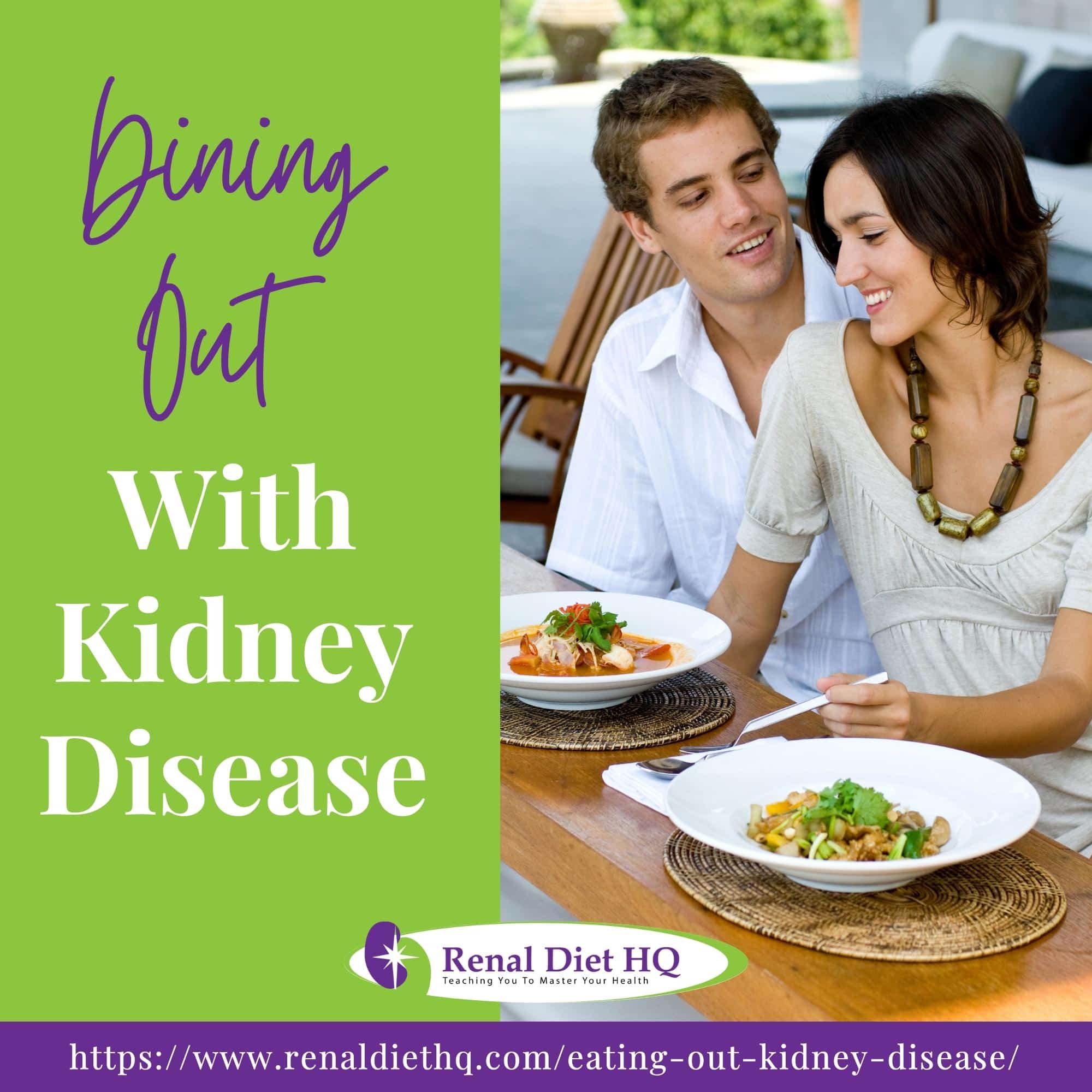
Choosing Kidney-Friendly Options at Restaurants
Finding scrumptious decent options at your favorite restaurants that are also friendly for your renal diet isn't as tricky as you might think! You just need to hone your skills in portion control (portion control for CKD patients), managing fluids, deciphering hidden common ingredients, and reading menu options effectively.
Call the restaurant a day or two before your "dinner or lunch date" and explain your dietary needs. Ask the manager or chef if there are any accommodations the restaurant can make in order to work within your dietary constraints. Many common restaurants are quite willing to assist in this.
Calling ahead saves you from any discomfort you may feel making special menu requests in front of friends and/or family when eating out. Kidney disease, after all, isn't something you discuss with everyone.
Even if you're unable to call ahead or decide against doing so, it's important to stick to your diet at all times -- even when you're eating out. Kidney disease doesn't take the day off for family celebrations and your good health is worth giving up a few dishes that are no longer on your menu.
Ask your server about menu items that might meet your needs. People are surprisingly willing to help if you explain what your needs are. It can be something as simple as not adding the traditional seasonings to broiled seafood or getting steamed vegetables prepared without butter and salt.
Managing fluids is crucial when eating out. Remember to stay within your fluid allowance and choose beverages wisely. Avoid high potassium juices such as grapefruit juice, orange juice and pomegranate juice . Opt for low-potassium fruit juices instead, like apple juice or cranberry juice.
With these helpful tips in mind, enjoy a satisfying dining experience while keeping yourself healthy.
The Importance of Portion Control When Eating Out
Portion control is still crucial to ensure that you don't exceed the limits on the allowed sodium, phosphorus, potassium, or protein per day.
It's essential to become familiar with correct portion sizes for different food groups, as this helps in managing nutrient intake effectively.
While dining out, use visual cues to estimate serving sizes accurately. For instance, a serving size of meat should be about 2-3 ounces — roughly the size of your palm. A serving of fruit is about the size of a baseball; one ounce of cheese matches the size of a thumb. These simple comparisons can help you stay within your dietary guidelines without having to resort to calorie counting at every meal.
Hidden ingredients can often interfere with the dialysis diet by adding excess sodium or phosphorus. Be sure to ask about how dishes are prepared and request all items without any salt or salty seasonings.
Reading menus can seem daunting but with practice, you'll become adept at spotting kidney-friendly options. Look for grilled, broiled or baked proteins; steamed rice; small green salads; low-potassium vegetables; fruit pies; sherbet etc.
Practicing mindful eating is another crucial strategy. Slow down and savor each bite — not only does this enhance your dining experience, but it also gives your body time to register fullness, preventing overeating. Request for half portions or share meals with others if dishes are oversized.
Remember that keeping kidney disease under control requires good nutrition management. By paying attention to portion control when eating out, you're making an important step towards maintaining balance in your diet while enjoying the pleasure of restaurant meals. While eating fast food on occasion may be fine, it's important to remember not to overdo it (dining out on a pre-dialysis diet).
Why Kidney Patients Should Limit Sodium
Sodium is a mineral that is commonly found in many foods and is an essential nutrient for our bodies. However, for people with kidney disease, sodium can pose serious health risks and harm the kidneys.
The kidneys play a crucial role in maintaining the body's fluid balance and filtering waste products from the blood. When the kidneys are damaged or not functioning properly, they can struggle to remove excess sodium from the body. This can lead to a buildup of sodium in the bloodstream, causing blood volume overload, edema, and increased blood pressure.
High sodium intake can cause the blood vessels to constrict, leading to increased blood pressure. Elevated blood pressure puts strain on the kidneys and can cause further kidney damage. It is important for kidney patients to monitor their blood pressure regularly and reduce salt intake to keep it under control.
Extra salt intake can also contribute to the development of edema, which is the swelling of body tissues due to fluid retention. Kidney patients are already prone to edema, and consuming too much sodium can exacerbate this condition. Edema can cause discomfort, pain, and difficulty in performing daily activities.
According to the National Kidney Foundation, healthy people shouldn't exceed 2,300 milligrams sodium per day, however, if you have kidney disease or high blood pressure, it's better if your meal plan contains 1,500 milligrams of sodium or less to meet your kidney health goals.
How To Reduce Sodium Intake
To minimize the harms of sodium on kidney patients, it is crucial to reduce sodium intake. Here are some tips to achieve a low-sodium diet:
1. Read food labels: Pay attention to the sodium content listed on nutrition labels. Choose low-sodium or sodium-free options whenever possible.
2. Cook at home: Preparing meals at home allows you to have control over the ingredient list and sodium content. Use fresh herbs, spices, and other flavorings instead of relying on salt for seasoning.
3. Limit processed foods: Processed foods, such as canned soups, frozen meals, and snacks, tend to be high in sodium. Opt for fresh, whole foods instead (processed foods and CKD).
4. Rinse canned foods: If you do use canned foods, rinse them under water before consuming to reduce sodium content.
5. Be cautious with condiments: Many condiments, such as soy sauce, ketchup, and some salad dressings, are high in sodium. Look for low-sodium alternatives or use them sparingly.
6. Choose fresh fruits and fresh vegetables: These kidney-friendly foods are low in sodium and provide essential nutrients for a healthy diet.
7. Stay hydrated: Drinking an adequate amount of water helps keep your kidneys healthy.
It is important for kidney patients to work closely with their healthcare team, including kidney dietitians, to develop a personalized and low-sodium diet plan with appropriate portions for kidney health.
By reducing sodium intake and making healthier food choices, kidney patients can help protect their kidneys and improve their overall well-being.
Navigating Sodium Content in Restaurant Foods
It's no secret that restaurant foods can be a minefield of hidden sodium, and if you're on a dialysis diet, it's crucial to navigate this challenge effectively. One way to sidestep the hidden sodium trap is through menu analysis.
By scrutinizing the menu carefully, looking out for words like "brined," "broth," or "smoked" which often indicate high sodium content, you can make healthy food choices.
Here's a handy table to guide your selections:
| High Sodium Food | Healthy Substitutions |
| Fried chicken | Grilled chicken options |
| Canned vegetables | Steamed vegetables |
| Pastries with icing or cream fillings | Fruit purees and fresh fruit desserts |
| Omelets with cheese | Omelets with veggies |
Reading food labels is another essential skill when dining out. Many food chains provide nutritional information online; take advantage of this resource before heading out.
Switching to healthier substitutions and utilizing sodium alternatives like spices, vinegar, or lemon juice instead of salt could drastically cut down your sodium intake. Remember, keeping your health in check doesn't mean giving up on eating out entirely. It just takes a little extra effort and knowledge to enjoy meals without compromising your renal diet.
Why Renal Patients Should Avoid Excessive Potassium Intake
Renal patients need to be cautious about their potassium intake, as excessive levels of potassium can have detrimental effects on their health. Potassium is an essential mineral that plays a crucial role in maintaining the proper functioning of various bodily processes. However, for individuals with compromised kidney function, keeping potassium in check becomes even more critical.
When the kidneys are not functioning properly, and this can lead to a condition called hyperkalemia, which is characterized by abnormally high levels of potassium in the blood. Hyperkalemia can lead to a range of problems, including tingling, nausea, irregular heart rhythms, muscle weakness, and even death.
Renal patients are typically advised to follow a low-potassium diet to prevent complications associated with hyperkalemia. Renal patients should limit or avoid foods that are high in potassium, such as bananas, oranges, and tomatoes. Instead, they should focus on consuming foods that are lower in potassium, such as apples, berries, cucumbers, and cabbage.
In addition to dietary restrictions, renal patients may also be prescribed medications called potassium binders. These medications help bind excess potassium to stool, preventing its absorption into the bloodstream. This can be an effective way to manage potassium levels in individuals who struggle to control their intake through diet alone.
It is crucial for renal patients to work closely with their healthcare team, including their nephrologist and kidney dietitian, to create a personalized plan for managing potassium intake. They may be able to provide you with common ingredients with low potassium content to add to your ingredient list. Regular blood tests may be needed to help monitor potassium levels and make necessary adjustments to the treatment plan.
By following a low-potassium diet, taking prescribed medications, and closely monitoring their potassium levels, renal patients can better manage their condition and reduce the risk of complications. It is essential to seek guidance from healthcare professionals to ensure a well-rounded approach to managing potassium intake and maintaining overall health.
Dealing with High Potassium Foods in Restaurants
Navigating the menu at your favorite restaurant can be tricky when you're on a dialysis diet, especially with hidden high-potassium foods lurking in unexpected places. Understanding potassium restrictions and finding low potassium restaurant options is essential for managing your health.
Here are a few tips to help you deal with high-potassium foods:
- Be vigilant about snacks: You may love munching on chocolates or nuts, but these are high in potassium. Opt for lower potassium alternatives like apple slices or grapes.
- Be mindful of hidden sources: Remember that potassium additives can be present in unexpected places, such as broths, stocks, and soups. Ask your server about the ingredients and preparation methods if you're unsure.
- Flavoring Alternatives: Instead of using tomato sauce that can be high in potassium, ask for lemon juice or vinegar-based dressings that still add flavor without the extra potassium.
Dining out doesn't have to be stressful if you're armed with the right information and strategies. With careful planning and smart decisions, you can enjoy a kidney-friendly meal out without compromising your health. Remember, prioritizing your wellbeing doesn't mean sacrificing enjoyment; it's all about balance and making informed choices.
Controlling Protein Intake When Dining Out
If you have kidney disease, it's important to carefully monitor your protein intake. Protein is an essential nutrient that helps repair and build tissues in the body, but when you have kidney disease, your kidneys may struggle to filter out waste products from protein metabolism. This can lead to a buildup of waste in your blood, which can be harmful to your overall health.
When dining out, it can be challenging to control your protein intake, as many restaurant meals tend to be high in protein. However, with a little planning and awareness, you can still enjoy a meal outside of your home while maintaining a healthy protein intake.
Your recommended dietary intake of protein will depend on the specific stage of your kidney disease, so make sure to discuss your regimen with your healthcare team. Later stages of kidney disease generally require you to consume less grams of protein compared to the earlier stages.
It's better to opt for plant-based options such as beans, lentils, and tofu. These can be a great source of protein while still providing healthy fiber and other important nutrients. Additionally, you should watch out for hidden sources of protein such as cheese, sour cream, or cream sauces.
When ordering sides, opt for plant-based options of proteins (vegan renal diet recipes) such as green beans, black beans, baked beans, or bean sprouts, with a side salad with olive oil and vinegar dressing.
By being proactive and mindful when dining out, you can enjoy a delicious meal while still maintaining control over your protein intake.
The Role of Hydration When Dining Out
When you're hitting up your favorite eatery, striking a balance between hydration and fluid restriction is crucial! Proper hydration offers numerous benefits, such as promoting renal function and preventing kidney stones. However, while dining out on the renal diet, it's essential to monitor your fluid intake closely, especially if you're on dialysis.
Excessive fluid intake can lead to complications such as swelling, high blood pressure, and heart problems. Here are some strategies for restricting fluid intake while still enjoying restaurant meals:
Ask for a kid's cup of water. Kid's cups are much smaller than regular restaurant cups and you won't be as tempted to over-indulge in liquids if you get a cup that holds the proper amount of liquid for your meal. Once you've had your allotment of liquid, ask the server to remove your cup from the table in order to help you resist any temptation you may have to order, or accept a refill.
In the same vein, get rid of all pitchers, coffee cups, etc. that might encourage you to have another glass. Otherwise you run the risk of needing to cut back on eating out. Kidney disease is a major illness that must be treated as such.
These tips offer an idea of how to balance your fluid intake with different dialysis treatments. But remember, each person's needs can differ significantly. Consult with your renal or dialysis dietitian for personalized advice.
Note that hemodialysis patients have stricter fluid intake requirements compared to peritoneal patients because hemodialysis is an intermittent treatment that occurs a few times a week, compared to peritoneal dialysis, which is carried out each day.
Now you know that dining out doesn't mean neglecting your fluid balance By keeping these strategies in mind, you can enjoy a night out without compromising your dietary needs. It's all about finding the right balance and making informed decisions that prioritize both enjoyment and health!
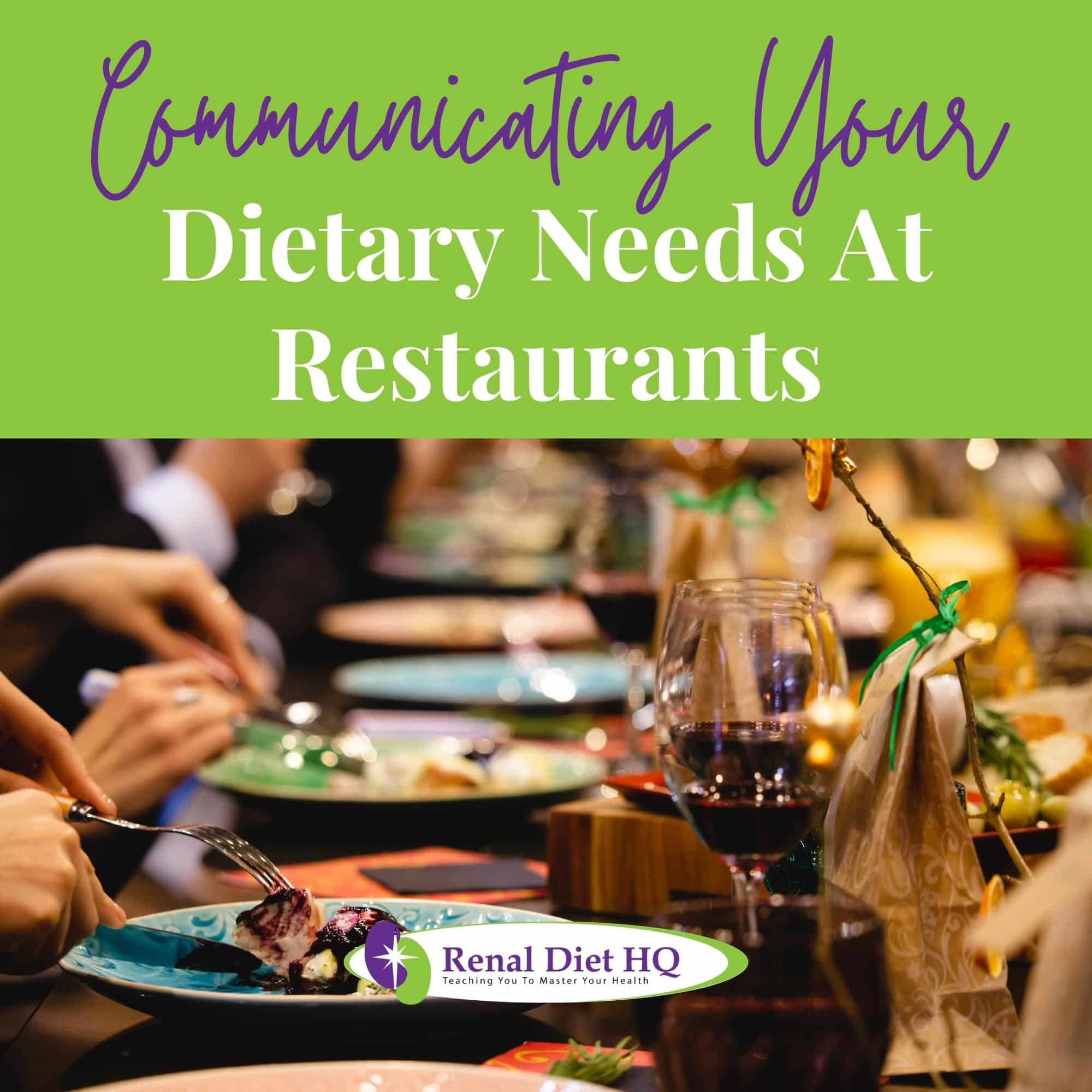
Communicating Your Dietary Needs at Restaurants
So, you're ready to enjoy a meal at your favorite restaurant while on a kidney-friendly diet, but how can you ensure that your dietary needs are met? The key is effective communication. Here's how to go about it:
- Communicating Preferences: Be clear and confident when discussing your dietary restrictions with the waitstaff. They're there to make sure you have an enjoyable dining experience.
- Menu Modifications: Don't be afraid to ask for changes to menu items. Many food chains are willing to accommodate special requests, like reducing salt in a dish or swapping high-potassium sides for kidney-friendly options.
- Special Requests: If you're unsure about a dish's ingredients, request clarification from the staff. They can provide insight into options that might be suitable for your renal diet.
Remember, dining out should not feel like navigating through uncharted territory. Creating proactive dialogue around your dietary restrictions ensures a satisfying meal that aligns with your kidney health goals—without sacrificing taste or enjoyment!
Making Healthy Choices at Fast Food Restaurants
Believe it or not, even your favorite fast food joints can offer you some dialysis-friendly options if you know what to look for! Understanding menu options is crucial when dining out.
Opt for a plain hamburger with only a burger patty, lettuce, onions, and a small amount of ketchup or mustard. Consider roast beef or turkey sandwiches featuring low potassium toppings like cucumbers and onions.
When it comes to managing phosphorus intake, your healthcare provider may recommend that you take your prescribed phosphorus binders before, during, or right after the meal. These binders help control the absorption of phosphorus from your meal which is especially important as restaurant foods often contain high phosphorus content.
Avoid high-phosphorus foods such as bottled beverages with phosphate additives, chocolate drinks, dairy milk, and ice cream. Opt for low-phosphorus foods and beverages instead, such as bottled water, tea, coffee, ginger ale, cream cheese, brie cheese, cottage cheese, and milk substitutes such as rice milk or coconut milk options.
In terms of condiments, go for the ones with the lowest sodium. Extra salt can be harmful to people with kidney disease, so ask for dressings (kidney friendly salad dressing) and sauces on the side to control how much you consume. And who said you can't enjoy dessert? Healthy dessert alternatives include sherbet or fruit pies that are healthier than other sweets.
If you're concerned that menu items might be detrimental to your dietary needs, ask your server for more information about how the food is prepared and whether or not adjustments might make it a friendlier fit for your needs and your palate.
When you're eating out, kidney disease doesn't have to rule all aspects of the meal, but you must plan your meal ideas with your condition in mind. With these tips in mind, navigating the menu at a fast food restaurant becomes less daunting while adhering to your kidney diet's needs.
The Impact of Alcohol on Kidney Health
Imagine sitting at your favorite bar with friends, poised to order a round of drinks, and wondering how alcohol might affect your renal health. It's essential to understand the effects of alcohol on kidney function, especially if you have kidney disease.
Alcoholic beverages can be a concern for renal health. Moderate drinking may not immediately harm your kidneys, but heavy or chronic drinking can cause lasting kidney damage. Alcohol dehydrates the body, which affects how well the kidneys can work. It also increases blood pressure, which is a common cause of kidney disease.
If you're managing alcohol intake with kidney disease, it's crucial to consult with your healthcare provider or renal dietitian about safe levels of consumption. They can provide personalized advice based on your specific condition and treatment plan.
One must be aware of the risks of alcohol consumption for kidney patients. Over time, excessive drinking could lead to worsening kidney function and complicate kidney disease treatment.
So next time you're out with friends or in any social setting where there's alcohol available, remember these considerations. Prioritize your health by making informed decisions regarding alcoholic beverages (renal diet and alcohol) and enjoy yourself responsibly while maintaining optimal renal health.
Tips for Enjoying Social Dining with Kidney Disease
Navigating a bustling restaurant or lively family gathering can feel like a culinary minefield when you're managing your renal health, yet with the right knowledge and preparation, it's entirely possible to savor these social experiences while maintaining a balanced diet.
Understanding portion sizes is crucial. A serving of meat should be about the size of your palm and remember to limit it to 2-3 ounces.
When dining out with friends, managing phosphorus intake may seem challenging. Be mindful of hidden sources like soft drinks and flavored waters that could hike up your phosphorus levels.
Reading menus carefully is another critical strategy. Look for broiled, grilled, or baked options which are typically lower in their amounts of sodium than fried choices.
Finding low sodium options can be tricky but not impossible. Opt for salads with dressing on the side and avoid problematic items high in salt like soups or casseroles or macaroni salad.
Embrace these strategies as part of your social dining enjoyment. Maintaining renal health doesn't mean missing out; it means making informed choices that align with your dietary needs without sacrificing flavor or fun times with friends.
FAQs About Eating Out with Kidney Disease
Managing fluid intake when dining out on dialysis involves several strategies.
Start with fluid tracking methods to monitor your intake throughout the day.
Be wise in food selection, avoiding liquids in soups or sauces.
Decoding beverage labels can help avoid high-sodium drinks.
Remember, every sip counts towards your daily limit, so plan ahead for a balanced and enjoyable meal.
Absolutely, you can still savor your preferred cuisine while on a renal diet. Opt for renal-friendly desserts like fruit pie or sherbet. Use kidney-safe condiments sparingly to flavor your meals.
Start with low-potassium appetizers such as steamed veggies. If sushi is your favorite, choose a renal diet sushi option without high-sodium soy sauce. When dining at pizza joints, opt for low sodium pizza by limiting the cheese and avoiding cured meats (following a low sodium kidney diet).
Always ask for nutritional information to make informed decisions about what's best for your health.
To ensure your meal isn't cooked with high-potassium ingredients, be open about your dietary restrictions. Discuss your needs with the restaurant staff and ask for nutrition transparency.
Specifically, request they avoid using potassium-rich foods in your meal. Many places even offer kidney-friendly menus now that will help keep your potassium in check. There are vegetables low in phosphorus and potassium.
Good restaurant communication is crucial to enjoying a safe, delicious meal while managing your health needs. It's all part of making informed choices when dining out on a renal diet.
For fast food alternatives, consider kidney-friendly breakfasts like low-sodium omelets with veggies.
Instead of a high-salt pizza, opt for a renal-friendly version (7 day renal diet meal plan) with lean meats and avoid extra cheese.
When craving sweets, choose kidney-safe desserts like fruit pie or sherbet.
Always seek out substitutes with the lowest sodium when possible.
It's all about making mindful choices without sacrificing taste!
Absolutely! When attending social dining events, there are several strategies you can use to enjoy the experience without deviating from your dialysis diet.
. First, when dining out, opt for healthier choices that align with your dialysis diet. Stick to foods that are low in sodium, phosphorus, and potassium. Choose lean proteins like fish or chicken meat options, and opt for steamed or lightly sautéed vegetables and limit overall protein intake. Avoid problematic items like high-sodium sauces, dressings, and processed foods.
. When it comes to desserts, try to savor them in moderation. Look for decent options that are kidney-friendly and low in phosphorus and potassium. Remember, it's all about finding a balance between enjoying yourself and sticking to your dietary restrictions.
. Additionally, be mindful of your drink choices. Opt for low sodium drinks to help stay within your limits. Avoid beverages that are high in phosphorus or potassium, as these can be harmful to your kidneys.
. Another helpful tip is to exercise portion control. By keeping track of what you're consuming during these occasions, you can better manage your nutrient intake and ensure you're staying on track with your renal diet.
. Don't be afraid to negotiate with the menu. Many restaurants are willing to accommodate special dietary needs, so don't hesitate to ask for kidney-friendly preparations. This can help ensure that the food you're eating aligns with your dietary restrictions.
. Lastly, it's always a good idea to consult with a renal dietitian for personalized advice. They can provide you with insight into options and specific meal ideas tailored to your individual needs. Also, it's wise to know what to avoid on a renal diet.
Remember, enjoying social dining events while following your dialysis diet is possible. With a little planning and mindfulness, you can still have a great time while taking care of your health.
Enjoy Healthy Dining Out With Kidney Disease
You can still enjoy dining out while managing your kidney health. Just be savvy about your food choices and watch portion sizes.
Navigate sodium and potassium content wisely. Don't hesitate to discuss your dietary needs at restaurants.
Even fast food can fit into a dialysis diet with smart decisions. Remember, alcohol impacts kidney health too.
When you're eating out, kidney disease may occupy a surprising cross section of your thoughts. It's best if you can tune it out and focus on having fun with your friends and family.
Don't let it ruin the time you spend eating out. Kidney disease will get easier to live with as time goes by and you establish routines and habits. Until then, when eating out, kidney disease, must take a bit of a front seat as you order your meal and afterwards.
Please take a look at my latest book on Eating Out On a Kidney Diet

